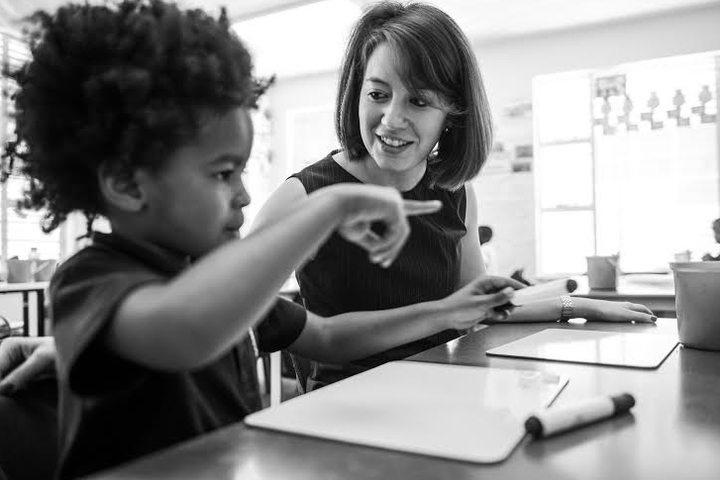Bailey Thomson and SPARK Schools are helping to break ground on education in Africa.
SPARK schools -- a chain of private schools in South Africa for which Thomson is the director of school design -- are the “first primary schools employing a blended learning model on the African continent.” Blended learning schools emphasize the delivery of content through digital tools, combining some face-to-face learning with online learning. Blended learning models have already been instituted in American classrooms across the country.
While SPARK schools are private, their fees are often lower than that of nearby government-run schools, which also charge fees. We spoke with Thomson to learn more about her work and SPARK schools.

You’re American. How did you get involved in SPARK Schools?
I began in education through Teach for America. I was in the Bay Area corps in 2010 and I taught at Rocketship, a network of charter schools. I was in a leadership development program getting ready to move into school leadership when I met Stacey Brewer and Ryan Harrison – the founders of SPARK Schools. They wanted to leverage blended learning, and that was a big draw for me.
We got to talking because I wanted to connect them with a friend of mine in [education technology]. Over the course of the next week or so they came to observe my classroom and we chatted about their vision. They were not hiring and didn’t want to poach from Rocketship, but I was touched by their vision and got in touch a month later.
What sets SPARK schools apart from other schools?
South Africa’s education sector is very traditional both in the government schools and in private schools. There’s a lack of innovation in the elementary and high school space and also a lack of focus on academic rigor. Students are not learning to read until grade 2 and not learning to add and subtract until late in grade 1. Those things mean that even though South Africa has a developed economy, it’s not developing kids to becoming leaders in that economy – it’s more for foreigners. Our blended learning model focuses on academic achievement and that sets us apart from most other schools. It allows for our students to have a lengthened school day by three hours.
How big is the network of SPARK schools?
We opened our first school in 2013 with 100 students. In January we will have eight schools with 2,900 students. We are looking to have opened 20 schools by 2019, with a goal to ultimately open about 64 schools across the country.
What differences have you noticed between American and South African schools?
It’s hard to draw large generalizations because I know American education is changing and improving at different rates in different places.
There is a significant lack of understanding here that students are capable and can drive their own learning. I think this is due to a lack of professionalism in teaching and a lack of professional development for those who are in schools. Something we take seriously at SPARK is our teachers, and we have 250 hours of professional development a year.
What results have your students seen?
We view our students’ academic achievement in a local context and international context. Within South Africa, national assessments are the ANAs. Our goal is for students to be scoring 50 percent or higher on the next grade level’s ANAs.
Our pursuit is for our students to be globally competitive but to serve their communities in South Africa. That’s a line we want to walk.
Interview has been edited and condensed for clarity.
